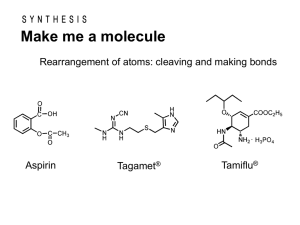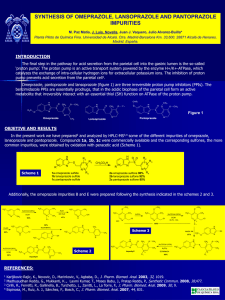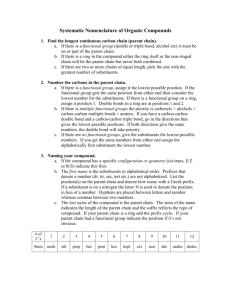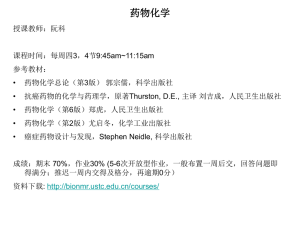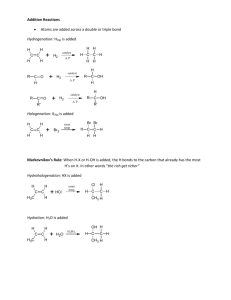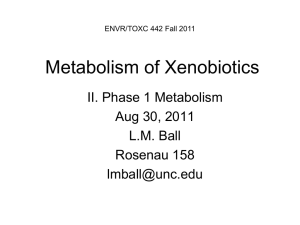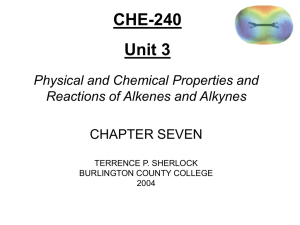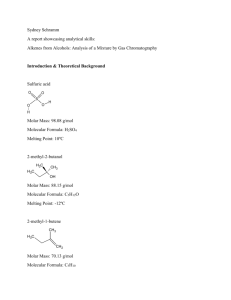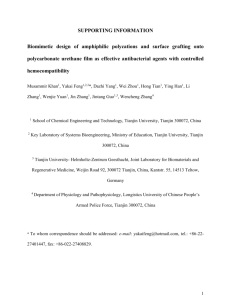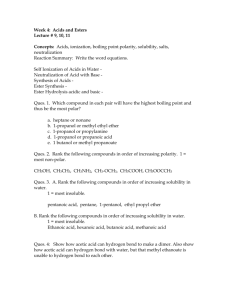CH341-01, Exam 2, Summer 2007
advertisement
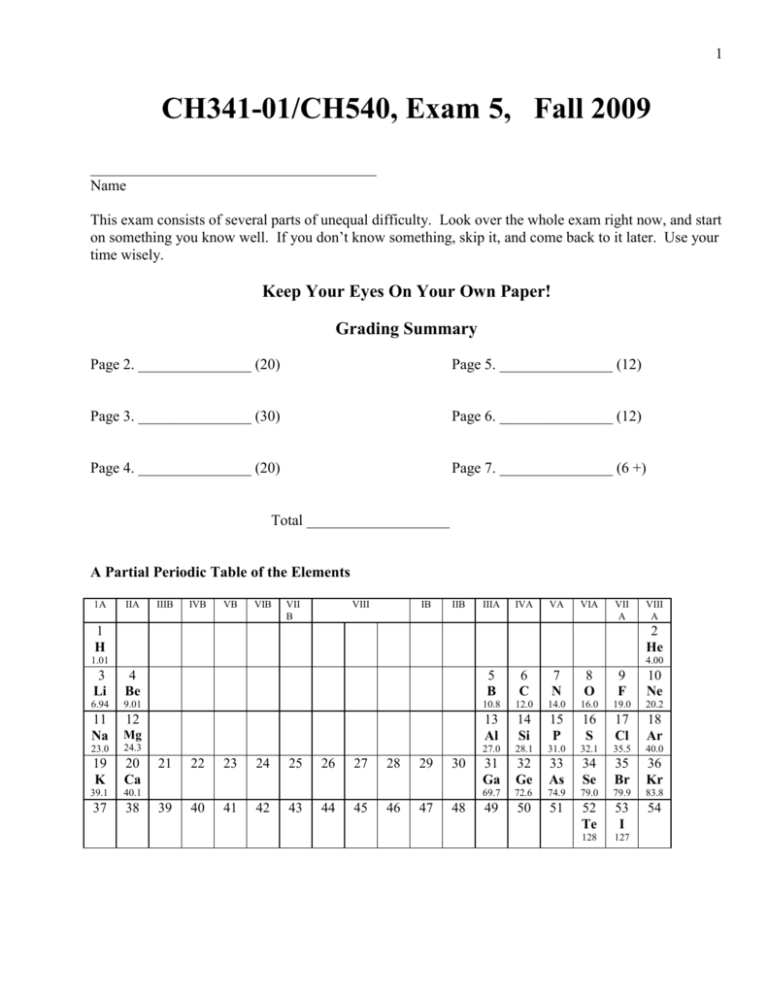
1 CH341-01/CH540, Exam 5, Fall 2009 ______________________________________ Name This exam consists of several parts of unequal difficulty. Look over the whole exam right now, and start on something you know well. If you don’t know something, skip it, and come back to it later. Use your time wisely. Keep Your Eyes On Your Own Paper! Grading Summary Page 2. _______________ (20) Page 5. _______________ (12) Page 3. _______________ (30) Page 6. _______________ (12) Page 4. _______________ (20) Page 7. _______________ (6 +) Total ___________________ A Partial Periodic Table of the Elements 1A IIA IIIB IVB VB VIB VII B VIII IB IIB IIIA IVA VA VIA VII A 1 H VIII A 2 He 1.01 4.00 3 Li 4 Be 5 B 6 C 7 N 8 O 9 F 10 Ne 6.94 9.01 10.8 12.0 14.0 16.0 19.0 20.2 11 Na 12 Mg 13 Al 14 Si 15 P 16 S 17 Cl 18 Ar 23.0 24.3 27.0 28.1 31.0 32.1 35.5 40.0 19 K 20 Ca 31 Ga 32 Ge 33 As 34 Se 35 Br 36 Kr 39.1 40.1 69.7 72.6 74.9 79.0 79.9 83.8 37 38 49 50 51 52 Te 53 I 54 128 127 21 22 23 24 25 26 27 28 29 30 39 40 41 42 43 44 45 46 47 48 2 1. (20) Give IUPAC names for the following structures. Use R, S, E, or Z, when needed. a. O H2N OH HO b. H3C N CH3 H3C CH3 CH3 c. NH2 CH3CH2 CH2CH3 d. Draw the structure of tripropylamine. 3 2. (30) Draw the major organic product of each of the following reactions. If no reaction will occur, write “No Reaction.” a. O SOCl2 CH3 HO heat b. H O 200 °C N CH3 HO c. + CH3 O OH + CH3 HO d. H+ (cat.) O CH3 e. Cl + NH2 + H2N CH2CH3 (excess) CH3 f. H2C NO2 NaBH3CN CH3OH, HCl pH = 6 H+ (cat.) 4 3. (20) Supply the needed reagents and experimental conditions to accomplish each of the following transformations. More than one step may be required in some cases. a. C N CH2 NH2 b. O H3C OH H3C c. OH H N O d. O O OH O OH O O Draw the structure of the “polymer” that would be formed if two molecules of each of the following materials reacted with each other. H2N 2 O NH2 + O heat 2 HO OH 5 4. (12) Write acceptable arrow-pushing mechanisms for the following reactions. a. O O H+ (cat.), heat C C + H2O + HO CH3 H3C O CH3 H3C OH b. Na H + N H3C CH3 + C CH3 H H N B - H H H2O H3C C H CH3 + BH3 + NaOH CH3 6 5. (12) How would you synthesize the following products from the indicated starting materials? You do not need to draw the mechanisms. If you show intermediate structures, I can more easily give you partial credit. Product a. Starting Material CH2CH3 O H2N b. C OH OH O C H3C CH2 OH H3C CH2 7 6a. Rank the following from highest (#1) to lowest (#3) in boiling point. Briefly explain your reasoning. CH3 CH3 O H3C H3C H3C OH NH2 OH 6b. Rank the following from highest (#1) to lowest (#3) in base strength. NH2 Na + CH3 O H - H3C NH2 Bonus: When starting material A, below, is treated with excess H2, in the presence of Pd and an acid catalyst, product B is formed. A series of reaction occur to get from A to B. Draw the sequence of reactions that occurs. You do not need to draw the mechanisms. O H N Excess H2, Pd (cat.) H+ (cat.) C "A" N "B"
